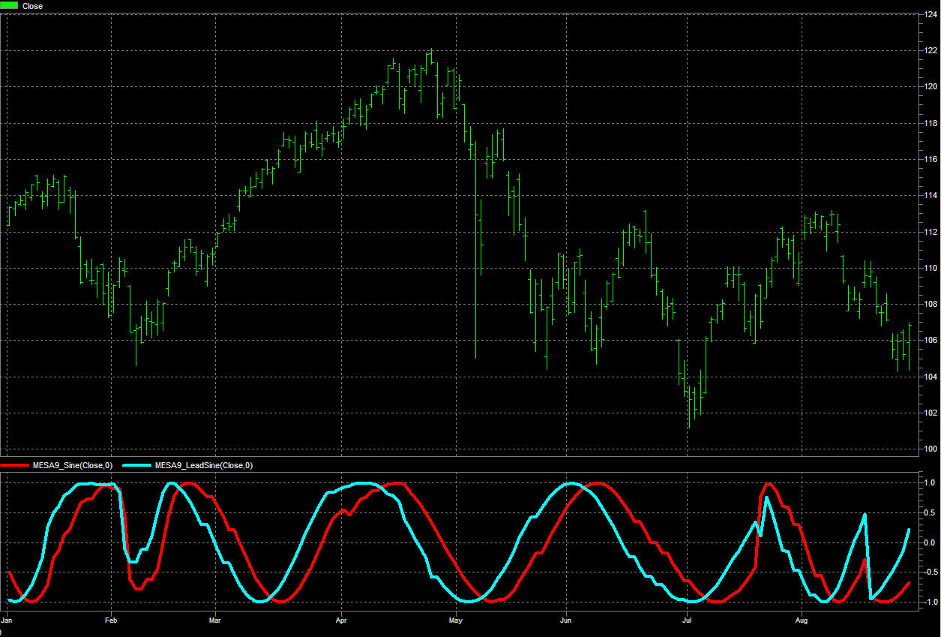Category: MESA9
Input parameters
Name |
Setting |
Default |
Optimization range |
Θ |
Number>0 |
0 |
-180 to +180 |
Price |
Input time series |
Close |
|
Description
The problem with virtually all indicators is that they are causal. That means they directly depend on data for their computation. As a result, the computation cannot be accomplished until after the data arrives, and - as a result - all causal indicators have lag. Lag is perhaps the traders' worst enemy, particularly when trading the cycle mode when relatively short term entries and exits are expected. MESA9 offers a solution to the lag problem by offering the MESA9_Sine and MESA9_LeadSine indicators. The market is coherent in the cycle mode, meaning that the Dominant Cycle has existed for a short while in history. It is further assumed that the dominant cycle will continue for a short time into the future. Since the dominant cycle is known, and its phase can be computed, we can advance time by advancing phase of the coherent dominant cycle. The MESA9_Sine Indicator is computed from the phase of the Dominant Cycle. Combined with the MESA9_LeadSine Indicator, composite indicator is created that produces a crossing signal 1/8th of a cycle ahead of its turning point. For an 16 bar cycle, the crossing occurs 2 bars ahead of the cyclic turning points - just right for making a timely trade entry. The MESA9_Sine indicator contains an input parameter Θ. Θ is an angle in degrees that can be set to bias the indicators either to the lead or lag directions or to compensate for lag at your discretion. Θ varies from minus180 degrees to plus 180 degrees. Clearly, the MESA9_Sine and MESA9_LeadSine indicators do not work so well when the market is in a trend mode.
Related Indicator: LeadSine
